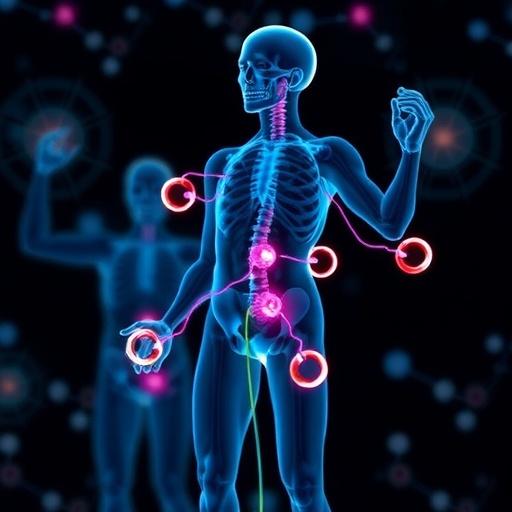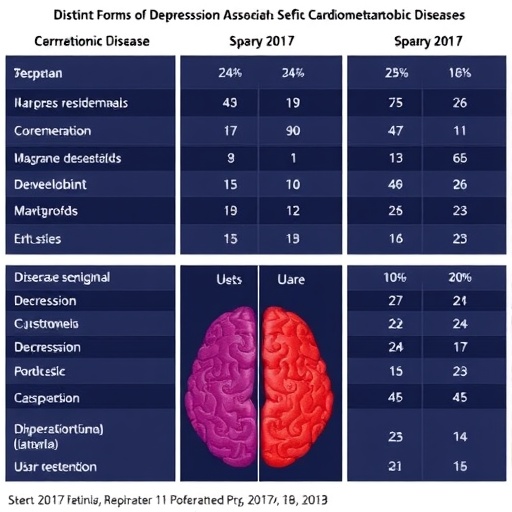Obesity, a global health crisis that continues to escalate at an unprecedented rate, has long been a subject of extensive biomedical research. Recent advances have increasingly highlighted the autonomic nervous system, particularly the sympathetic branch, as a pivotal player in the regulation of energy balance and metabolism. In a groundbreaking systematic review authored by Araújo, Leite, and Ribeiro, published in the International Journal of Obesity, the intricate interplay between the adrenergic system and obesity is meticulously dissected, shedding new light on possible mechanistic pathways influencing this multifaceted disease.
The adrenergic system, comprising receptors sensitive to catecholamines such as norepinephrine and epinephrine, exerts profound effects on metabolic processes including lipolysis, thermogenesis, and glucose homeostasis. Dysregulation in this system’s signaling pathways has emerged as a critical factor predisposing individuals to increased adiposity and metabolic dysfunction. Notably, the review emphasizes that sympathetic nervous system (SNS) hyperactivity, once thought only to enhance energy expenditure, paradoxically may contribute to the pathogenesis of obesity through complex receptor desensitization and altered adrenergic receptor expression patterns.
One of the salient findings outlined in the review concerns the differential roles of adrenergic receptor subtypes. Beta-adrenergic receptors (β-ARs), especially β3-ARs, are primarily responsible for stimulating lipolysis in white adipose tissue and promoting thermogenic activity in brown adipose tissue. However, chronic overactivation or prolonged exposure to catecholamines leads to a downregulation and desensitization of these receptors, undermining their metabolic benefits and potentially fostering fat accumulation. This receptor plasticity highlights a paradoxical feedback mechanism that might explain why obese individuals often exhibit reduced β-AR responsiveness.
Moreover, alpha-adrenergic receptors (α-ARs), particularly the α2 subtype, are intricately involved in inhibiting lipolysis. An enhanced signaling through α2-ARs in obesity states could thus suppress fat breakdown, compounding the tendency towards adiposity. The systematic review synthesizes evidence indicating that an imbalance favoring α-AR-mediated inhibitory signals over β-AR-driven lipolytic pathways may underpin the metabolic rigidity characterizing obese phenotypes. Understanding how this receptor crosstalk is modulated could open avenues for selective pharmacological interventions.
Importantly, the review also explores the central nervous system’s role in adrenergic modulation of appetite and energy expenditure. The hypothalamus, a critical brain region governing energy homeostasis, integrates adrenergic inputs influencing sympathetic outflow and feeding behaviors. Dysregulated adrenergic signaling in hypothalamic circuits could alter neurotransmitter release and neuropeptide expression, contributing to hyperphagia and diminished energy expenditure. Such neural adaptations may perpetuate a vicious cycle of weight gain and metabolic impairment.
In addition to receptor-level mechanisms, the authors delve into the altered systemic catecholamine dynamics observed in obese individuals. Clinical studies reveal elevated basal sympathetic nerve activity coupled with blunted peripheral responsiveness, suggesting that chronic SNS hyperactivity may induce a state of adrenergic desensitization. This maladaptive response not only affects adipose tissue metabolism but also cardiovascular regulation, potentially elucidating the frequent co-occurrence of hypertension with obesity.
From a translational standpoint, the review contemplates the therapeutic implications of these insights. Targeting adrenergic receptors with agonists or antagonists has been explored in obesity management, yet clinical outcomes have been variable and often limited by side effects. The nuanced understanding of receptor subtype-specific roles and their changes in obesity highlighted in this review underscores the necessity for precision medicine approaches that tailor adrenergic modulation to individual receptor profiles and metabolic states.
Furthermore, recent pharmacological developments, such as drugs selectively activating β3-ARs to enhance brown fat thermogenesis, are discussed. These agents hold promise to revive the impaired adrenergic signaling pathways in obese subjects, promoting energy dissipation rather than storage. However, the authors caution that long-term efficacy and safety require further investigation, particularly concerning receptor desensitization risks and off-target effects.
This comprehensive review also touches upon lifestyle and environmental factors influencing adrenergic regulation. Physical activity, for instance, is noted to modulate sympathetic tone and enhance β-AR sensitivity, providing a non-pharmacological avenue to partially restore adrenergic function in obese individuals. Similarly, chronic stress and poor sleep, known to disrupt autonomic balance, may exacerbate adrenergic dysregulation, reinforcing the complexity of obesity as a biopsychosocial disorder.
Technological advancements in molecular imaging and receptor profiling have enabled a finer resolution of adrenergic receptor distributions and functions in human tissues. The authors advocate leveraging these tools to further delineate the spatial and temporal dynamics of adrenergic signaling in obesity, facilitating the development of biomarkers for early detection and personalized therapeutic monitoring. Integrating such molecular data with clinical phenotyping could revolutionize obesity treatment paradigms.
The review also integrates epidemiological perspectives, illustrating how genetic polymorphisms in adrenergic receptor genes correlate with obesity susceptibility and therapeutic responsiveness. These findings reveal that inherited variations in ADRB2, ADRB3, and ADRA2A genes significantly influence individual risk profiles and may predict effectiveness of receptor-targeted interventions. Personalized genetic screening may thus become an instrumental component of future obesity management strategies.
Moreover, the interplay between the adrenergic system and other hormonal axes regulating metabolism, such as insulin and leptin signaling, is intricately analyzed. The authors delineate how impaired adrenergic receptor activity can disrupt crosstalk with these metabolic hormones, further impairing glucose regulation and fat oxidation. Such integrative perspectives underscore the systemic nature of obesity pathogenesis, challenging reductionist therapeutic models.
In conclusion, the systematic review by Araújo and colleagues enriches our understanding of the adrenergic system’s multifaceted role in obesity, exposing intricate mechanisms whereby dysregulated sympathetic activity contributes to pathological energy balance. This work paves the way for innovative research directions and therapeutic strategies that specifically target adrenergic receptors and their signaling pathways. By unraveling these complex interactions, scientists and clinicians edge closer to more effective and personalized solutions to combat the global obesity epidemic.
As this nexus of neurobiology, endocrinology, and metabolism continues to unfold, the adrenergic system emerges as a compelling target with vast potential. The challenge ahead lies in translating these molecular and physiological insights into viable clinical interventions that can halt or reverse obesity’s relentless progression while minimizing adverse outcomes. The future of obesity therapeutics arguably rests upon such integrative and mechanistically nuanced approaches illuminated by this pivotal review.
Subject of Research: The role of the adrenergic system in obesity pathophysiology and the sympathetic nervous system’s influence on metabolic regulation.
Article Title: The interplay between the adrenergic system and obesity: a systematic review.
Article References: Araújo, B., Leite, F. & Ribeiro, L. The interplay between the adrenergic system and obesity: a systematic review. Int J Obes (2025). https://doi.org/10.1038/s41366-025-01924-0
Image Credits: AI Generated
DOI: https://doi.org/10.1038/s41366-025-01924-0
Tags: adrenergic receptor desensitizationadrenergic system and obesityautonomic nervous system and obesitybeta-adrenergic receptors and lipolysiscatecholamines and energy balanceglobal health crisis of obesitymetabolic dysfunction and adipositynorepinephrine and glucose homeostasisobesity pathogenesis mechanismssympathetic nervous system and metabolismsystemic review on obesitythermogenesis and energy expenditure





